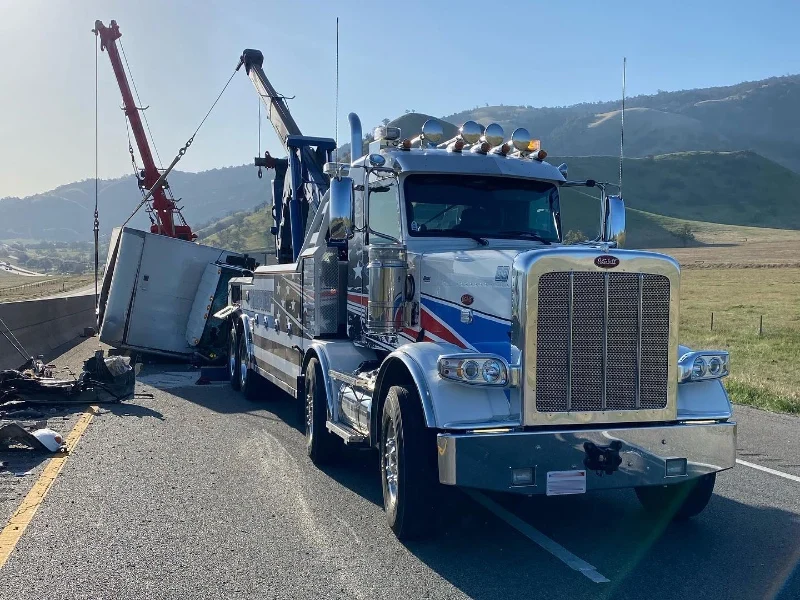Flipped Trucks and Sunken Trailers
You’ve probably seen a big rig tipped on its side or a construction vehicle sunk into a worksite and wondered how anyone gets that out. That’s heavy recovery. It’s towing something big with extensive planning, adapting, and working under pressure to solve some of the toughest problems on the road. We’re talking about major equipment failures, flipped semis, jackknifed trailers, and off-road recoveries that test every tool and skill we’ve got. Lamont heavy recovery is its own kind of beast, and if you’re not ready, it’ll show.

The Right Equipment, The Right Know-How
When we roll out to a heavy recovery job, it’s never a one-size-fits-all situation. Each scene demands its own game plan. That starts with bringing the right tools. We’re not just hooking chains and pulling. We’re using hydraulics, rigging gear, spreader bars, rotators, air cushions, and more.
A typical recovery unit we dispatch might include:
- A heavy-duty wrecker or rotator (capable of lifting over 50 tons)
- Rigging kits with chains, slings, and spreader bars
- Air cushion recovery systems
- Portable lighting for nighttime work
- Load transfer gear for cargo recovery
That’s just the truck. The bigger asset? Our crew. We’ve trained to read a scene quickly, understand vehicle weight distribution, calculate safe lifting angles, and work together in high-risk settings.
From Conch Outs to Catastrophes
A “conch out” — when a big truck bogs down off-road or sinks into unstable ground — might sound routine, but it can be deceptively difficult. These recoveries often happen on job sites, fields, or rural routes. Weight shifts, soft surfaces, and limited access create major challenges.
To handle a Lamont heavy recovery job like this, we often bring in recovery boards, winches, or rotators positioned from multiple angles. The vehicle may need to be partially disassembled, or the ground reinforced before we can even begin extraction. And we still have to protect the cargo and the vehicle from additional damage.
Then there are the real worst-case scenarios: rollovers on the highway, multivehicle crashes, hazmat spills, or trucks hanging over embankments. That’s where our training and calm execution matter most. We follow a strict procedure:
- Secure the scene and coordinate with law enforcement or emergency crews.
- Assess all hazards, including fuel spills, traffic conditions, and unstable loads.
- Decide how to stabilize and upright the vehicle without worsening the damage.
- Recover the truck and its trailer, and if needed, transfer or secure the load.
Problem-Solving on the Spot
No two Lamont heavy recovery calls are the same. Some need brute strength, others demand finesse. One day we’re dealing with a loaded cement mixer tipped into a ditch. The next, it’s a refrigerated trailer on its side in summer heat. And sometimes, we’re called in to clear the aftermath of a major pileup in the middle of the night. Each job requires quick thinking and teamwork.
And yes, things can go sideways. A recovery strap might snap. Equipment might need to be repositioned. The truck’s load might shift halfway through. That’s why we adapt fast, communicate clearly, and never take shortcuts. The safety of our team and everyone else on scene comes first.

Golden Empire Towing: Every Lamont Heavy Recovery Call Is a Big Call
Taking on a Lamont heavy recovery jobs means taking on a heavy responsibility. Every time we clear a wreck, we’re helping reopen roads, prevent further accidents, and keep freight moving. From a conch out on a county road to a full-scale highway rollover, we treat every Lamont heavy recovery with urgency and focus.
We do this Lamont heavy recovery work because we know someone has to. Because someone’s cargo needs to keep moving. Because a driver needs help. And because when a massive vehicle’s down, someone’s got to step up and get it back on its wheels. And we’re here for that, every single day.
